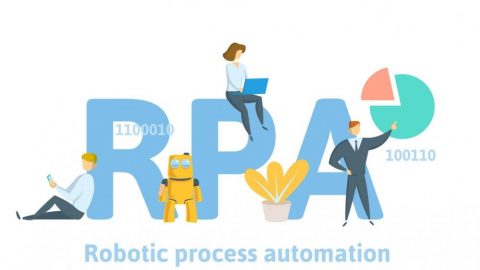
When it comes to process improvement, humans provide the most essential element. However, experts say that automation will play a significant role in making operations more efficient in the future – and in some cases, it’s already in place.
Will automation take jobs handled by people? In a sense, yes. The goal is to have automation take over routine tasks that waste valuable time for human employees. However, in theory, that will free up people to work on more creative, impactful projects.
There’s a name for this type of software: Robotic process automation (RPA). It’s a type of software that enables automation of even complex digital processes by performing them much in the way that human users would perform them.
Companies are turning to RPA to “streamline enterprise operations and reduce costs,” according to CIO. The global market for robotic process automation is projected to reach $5 billion by 2024.
How Robotic Process Automation Works
The difference between RPA and other automated software programs is that it can imitate a human user on multiple information systems. It’s a step between basic automation and the more advanced machine learning tools that can do the same work, but also be programmed to make decisions on future outputs from a system.
Companies already are putting RPA to use, including Walmart, American Express and AT&T. The most frequent uses are in financial process and transferring data from email and call center speech-to-text systems into transaction record systems, according to an article in the Harvard Business Review (HBR) titled, “Before Automating Your Company’s Processes, Find Ways to Improve Them.”
Other businesses have adopted RPA for back and middle-office processes.
However, it’s important to note that a robotic process automation system does not provide process improvement on its own. It works, as programmed, on tasks. It can do them faster, perhaps, but it doesn’t change the nature of the process itself.
That’s up to people.
Process Improvement Before Automation
Implementing process improvement before putting RPA into place is a wise move. For example, some processes are overly complex to begin with – that would fall into the extra-processing section of the eight wastes in Lean.
Finding what doesn’t add value to any process and then discarding it can help a process run even smoother, whether it’s done by a human or RPA.
As noted by HBR, robotic process automation operates by a set of rules when working with data. However, many of those business rules might not have been evaluated in years, making such systems inefficient.
HBR listed both Lloyd’s Baking Group and payroll company ADP as examples of companies who first implemented process improvement before instituting RPA. Both have seen improvements in efficiency.
“The companies we have seen achieve the greatest success in deploying RPA are those who combine it with the disciplines of process redesign and continuous improvement,” HBR wrote.
Source: Sixsigmadaily